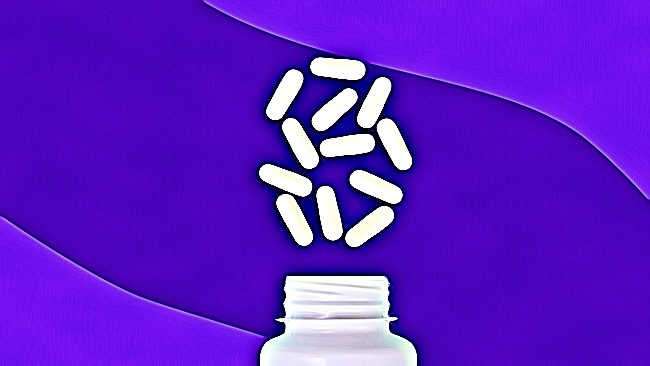A type of drug used to treat muscle pain and stiffness, methocarbamol is used to treat short-term muscle pain. It decreases pain messages and slows down the nervous system, which helps muscles relax. This prescription drug is primarily available as an oral tablet.
‘Methocarbamol’ is the generic term—its brand names include Robaxin, Marbaxin, and others. It is also available as an injectable solution, which only healthcare workers can administer.
It is possible to get high from this drug, which is why medical professionals regulate its use. One step to becoming sober is learning to protect oneself from possible triggers from prescription drugs like this one. Keep reading to learn more about this drug and how it could affect people in addiction recovery.
What Does a Methocarbamol High Look Like?
People with a history of substance abuse are at risk for methocarbamol abuse. Recreational use of this drug does not produce the same effect as other substances associated with addiction. However, a person taking high doses of methocarbamol could experience potentially dangerous side effects.
Take the case of a 120-pound female who took more than the recommended amount of Robaxin. At first, she took the correct dosage but observed no effects. As a result, she increased her intake. One hour after the increase, she experienced nausea, severe fatigue and problems with coordination, and a dissociated state. It took her four hours to recover from the side effects—she remained on a bathroom floor the entire time.
In another case, a man took a total of 7.5 grams of Methocarbamol or a total of fifteen 500-milligram pills. He also induced a delayed absorption to make the high more intense. This individual describes his experience as feeling like he was in an extended coma. He remained in conscious sedation for an hour. During that time, he experienced panic and found it difficult to breathe as well.
What Are Possible Side Effects of Methocarbamol?
Even if you use methocarbamol oral tablets as directed, they could cause several side effects. The most common ones are drowsiness, headaches, dizziness, lightheadedness, and sedation. These effects tend to be mild and could go away within a few days. If these conditions persist, the patient should speak to a doctor or pharmacist as soon as possible.
At times, some people experience severe side effects from methocarbamol. If the symptoms feel life-threatening or if you think you have a medical emergency, call 911 right away. The following is a list of severe side effects that could arise from using this drug:
- Allergic reaction: Some symptoms you can experience are rashes, hives, and itching. You could also experience chest tightness, difficulty breathing, and swelling in the face, throat, eyes, and tongue.
- Angioneurotic edema: This condition presents as swelling caused by the accumulation of excess fluid in spaces between tissues. It could cause pain in your lips, eyes, oral cavity, larynx, and gastrointestinal system.
- Bradycardia: When you experience bradycardia, your heart rate slows down to abnormal levels. This condition could also lead to low blood pressure, which could cause other, more severe conditions like stroke or cardiac arrest.
- Injection Site Reactions: Injected methocarbamol could cause swelling, redness, peeling, and pain at the injection site. It might also cause swelling in the vein receiving the medicine.
- Jaundice: Taking this drug could also cause the yellowing of your skin and the whites of your eyes. Research suggests a possible link between liver injury and methocarbamol, but it needs further study.
- Leukopenia: Methocarbamol could also lower a person’s white blood cell count. Low WBC counts could increase a person’s risk for developing infections.
- Cognitive impairment: The drug could also cause problems with cognition. Memory loss, confusion, and impaired coordination are common side effects of methocarbamol.
- Visual impairment: It could also cause double or blurred vision, involuntary eye movements, and red, watery, and itchy eyes.
- Neurologic impairments: Finally, this drug could cause episodic attacks of insomnia, seizures, and vertigo.

How Does Methocarbamol Interact with Other Medications?
Besides potentially causing several side effects, methocarbamol can also interact with a patient’s other medications. It could also decrease the effectiveness of vitamins or herbal supplements. You can avoid interactions by informing your doctor of all medications that you are taking.
Inform your doctor as well if you’re currently in addiction treatment. They could consider this when prescribing medications for you. A pharmacist or physician will know how methocarbamol could interact with other drugs, and they can tell you whether or not this drug will help you without causing adverse reactions.
For example, methocarbamol could reduce the levels of pyridostigmine bromide in the body, which will make this drug less effective. Ask your doctor about alternatives if you’re already using pyridostigmine bromide for myasthenia gravis, congenital myasthenic syndrome, or other conditions.
Besides making certain drugs less effective, it could also increase your risk of developing specific side effects. If you take any of the following, you have an increased risk for drowsiness or nausea when taking methocarbamol:
● Antidepressants: amitriptyline, doxepin, and imipramine.
● Antipsychotics: chlorpromazine, haloperidol, or quetiapine.
● Anxiety drugs: lorazepam, diazepam, clonazepam, or alprazolam.
● Herbal products: kava-kava or valerian root.
● Pain drugs: oxycodone, hydrocodone, tramadol, or morphine.
Does Methocarbamol Cause Withdrawal Symptoms?
This drug is not known to cause withdrawal symptoms, but a gradual transition into and out of use is still advisable. It’s because abruptly beginning or ending treatment with methocarbamol could cause the side effects mentioned earlier. Higher doses of this drug could also trigger suicidal ideation.
If you do experience withdrawal symptoms from stopping your methocarbamol treatment, they will be negligible to mild. Typically, a prescription for this drug will ask the patient to take three to six grams per day. Note that methocarbamol could be high-risk for older patients. It is because they are more likely to develop severe side effects from taking this drug.
Extreme situations that require higher doses of methocarbamol do exist. For example, a physician can prescribe Robaxin as a treatment for tetanus-induced lockjaw. If a person steps on a rusty nail and develops lockjaw, a doctor can prescribe that they take as much as 24 grams of this drug per day.
How to Manage Methocarbamol Withdrawal Symptoms
Methocarbamol has a weaker misuse profile and is not known for triggering withdrawal symptoms. Still, people with a history of substance abuse and drug addiction are at risk for misusing methocarbamol. Overdose is likely if an individual uses methocarbamol alongside sedatives like alcohol and certain antidepressants or antipsychotic medication.
Although methocarbamol does not cause severe withdrawal symptoms, especially when taken correctly, the patient will feel muscle pain and stiffness when the effects of the drug wear off. Ideally, this kind of drug will be part of a larger treatment plan.
A rehabilitation program helps manage the injury or illness and aids in pain management. A person experiencing methocarbamol withdrawal needs another way of controlling the
musculoskeletal pain from their condition, like other medication or physical therapy.
Conclusion
Although methocarbamol isn’t a narcotic, it can mimic the effects that narcotics produce. It could trigger persons with a history of drug abuse or ones undergoing addiction treatment. Education and proper information will help patients and their loved ones become proactive about preventing methocarbamol misuse.
Source: https://www.mayoclinic.org/drugs-supplements/methocarbamol-oral-route/side-effects/drg-20071962

